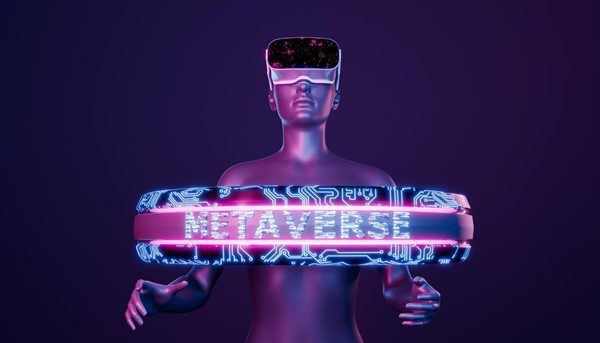Have you ever seen something that looked more real than the real world? Probably too far-fetched? We’re talking about Metaverse, which is the new buzzword. But do we all know what it is and what it could mean for the digital world? Perhaps too far-sighted at the moment! Let’s take a trip through the Metaverse before discussing how the changing technology can improve virtual games.
Understanding Metaverse
A metaverse is a network of 3D virtual platforms or worlds based on virtual reality technology. As a new part of technology, Metaverse focuses on social interaction. It is an internet-based virtual world that uses the potential of augmented reality.
It is not a single digital space but rather a network of digital areas and experiences that work together to make something that feels real. Bloomberg says that the metaverse market was worth $478.7 billion in 2020 and that by 2024, it will be worth $800 billion. Your business might be ready to go into the Metaverse.
Finding Metaverse Classifications
Even the Metaverse has different kinds. Here are two of them to help you understand better.
A Centralized Metaverse
The main goal of centralized Metaverse is to encourage deep user engagements. It uses services on the internet that are all run by one single authority. Here, personal information isn’t kept secret; instead, it’s made public and stays under the control of the authority in charge. Maintaining the metaverse platform’s power is easy because only one authorized entity tells it how to work.
Dispersed Metaverse
A decentralized metaverse is an open ecosystem not run by or controlled by a central or single authority. Blockchain technology has been one of the most critical factors in developing the decentralized Metaverse.
It has helped regulate things like interoperability, digital collectability of assets in the form of NFTs, governance, and the transfer of value through cryptocurrency, among other things. Through different augmented reality (AR) devices, a decentralized metaverse can help users cross over into the digital world and have a great time all around.
Gaming and the Metaverse: What’s in store?
A survey of 5,521 metaverse gamers found that most people who play the top three games are under 20 years old. As popular as it may seem, gaming is one of the leading industries that use Metaverse to offer a whole next-generation gaming experience. Metaverse has the power to bring users together in a way that has never been done before in a competitive gaming universe that goes from edge to edge.
The main thought behind the Metaverse is to keep people interested, which is obvious, and to give people a 3D environment they have never seen. But what’s the deal with the 3D setting? It just makes the users’ experience and the built-in gaming elements look more personal and tailored simultaneously.
Social Gaming
Socializing is something that not only millennials and Gen-Xers like and do more of, but also almost every other generation. Metaverse is inherently social and can beat the old ways of doing things, opening up new possibilities for multiplayer gaming. It can also help set up new ways to invite friends to meet in the real world, build relationships through games, and make gaming as social as connecting on social media.
Using Games as a Platform
This seems an exciting feature because it can give users the most freedom, creativity, and something they’ve never seen before when gaming. Users can easily connect to the virtual world, create mini-games within a live game, add to their content, and think of the gaming environment as a platform where they can do many different things.
Moveable Game Assets
As the name suggests, Metaverse offers interoperability architecture, which makes it possible to move assets from one place to another. This can encourage users to improve their avatars and weapons in any games that can be moved to a different platform.
Uses of the Metaverse in the Real World
Metaverse has implementations, and as a business, here’s what you need to know,
In Blockchain, Metaverse
As we’ve already discussed, a decentralized metaverse based on blockchain technology is a must-have for the ride into the future. It can easily power cryptos like Ether, Bitcoin, and others, and it can also work as a distributed ledger to help make NFTs and dApps. With a decentralized metaverse, businesses can set up a more exciting and realistic NFT Marketplace to control NFT trade.
Its ability to work with other platforms lets blockchain-based games and players on the in-game assets they collect and trade them between platforms. Talk to a blockchain development consulting company in California, USA, or a blockchain application development advisory services company to better understand what is going on.
Developing social media
This might not make sense initially, but meta platforms know that technology can do much more than help people connect. Metaverse isn’t just a 3D space where you can have video chats with people on your computer or phone or listen to their voices more clearly and clearly.
Instead, it aims to give users an experience that is out of the ordinary by using virtual and augmented reality. Compared to other social media sites, it provides a more realistic experience. They give users the tools to create content and show their creativity through technology.
Conclusion
The Metaverse will steal the show and take you on a futuristic ride through the digital algorithms. It has the potential to improve, revolutionize, and completely change the way virtual games are played.
Metaverse allows users to get started with 3D gaming, mining and trying to trade with gaming non-fungible tokens (NFTs), exclusive gaming options on social media, bringing the human touch with virtual reality, and connecting people around the universe remotely. There’s too much to say about that.



